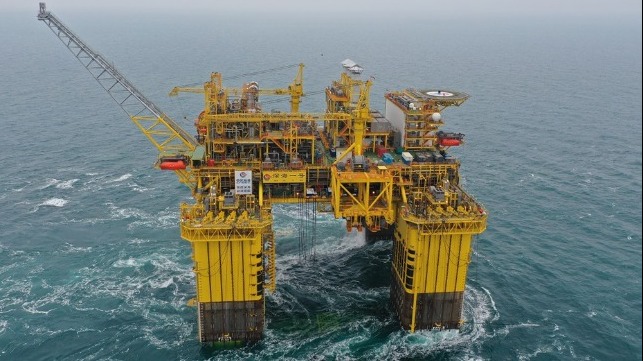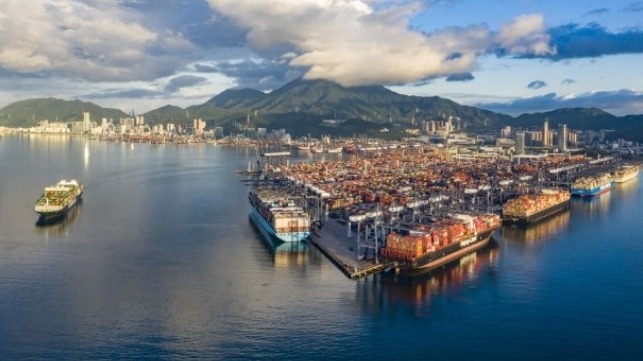
China started production at the world’s first 100,000 dwt deep-water semi-submersible floating production storage and offloading installation. The platform named the Shen Hai Yi Hao was installed at the Lingshui gas field in the South China Sea and it is China’s first self-developed deepwater FPSO. It was built by China’s Offshore Oil Engineering Company with the survey and certification from the China Classification Society (CCS).
“The Shen Hai Yi Hao is a world first and we are enormously proud of all the team who have worked so hard on this complex and demanding project with our partners CNOOC and COOEC,” said CCS President Mo Jianhui. “She is designed to the highest standards so she can operate for 30 years without dry docking for maintenance. She is capable of withstanding extreme environmental conditions. The maximum displacement is 110,000 tons, equivalent to three medium-sized aircraft carriers.”
Chinese officials said the building of the Shen Hai Yi Hao marks a “giant step forward” in China’s offshore development capability as it extends the exploration depth from the previous record of 300 meters to 1500 meters ultra-deepwater. The platform will be operated by China National Offshore Oil Corporation (CNOOC), which is China’s largest producer of offshore crude oil and natural gas. CNOOC estimates the Lingshui field’s reserves at about 136 billion cubic meters (BCM) of recoverable gas.
The CNOOC project manager You Xuegang said the project achieved three world firsts. “This is the first FPSO to have condensate oil storage in the four semi-submersible columns with a maximum storage capacity of nearly 20,000 m3; the largest span of the semi-submersible truss-type topside in the world of up to 49.5m and the first wet in-dock semi-stool assembly technology conducted on land. Meanwhile, 13 domestic initiative technologies have been applied practically, and her construction speed has set a new world record among the same type of platforms.”
CCS provided extensive statutory survey, classification, and third-party certification survey services throughout the design, construction, and installation of the platform. CCS began working on the project in February 2017, aiming to provide comprehensive technical services to enable the Shen Hai Yi Hao to begin operations from mid-2021.
“In the past four years, the project team has reviewed more than 24,000 documents, fed back more than 2,000 comments, and provided constant technical support for the project’s long-distance wet tow scheme, risk analysis, and measurement scheme,” said Jianhui. “The project team overcame many unfavorable factors such as working at home during the COVID-19 pandemic. During the peak period, the team reviewed 2,373 documents in one month, including 878 documents in one week, to ensure the project moved forward smoothly.”
Mr. Jianhui said particular focus was given to the super-large topside assembly and loading scheme, hot spot fatigue calculation for the hull structure, the large bracket-style setting in the NODE area, the safe operation and maintenance of lifeboats close to the flare heat radiation area, and the rescue and escape scheme under high freeboard towing conditions.
The Shen Hai Yi Hao’s topsides are made of 23 deck blocks, 200 oil and gas processing facilities units, and living quarters for up to 120 people. The platform will be anchored to the seabed in water depths of between 1,220 and 1,560 m via 16 anchor piles, while the project also features a polyester mooring system and SCR, as well as a 95-kilometer subsea pipeline.
SOURCE READ THE FULL ARTICLE
https://www.maritime-executive.com/article/china-starts-production-at-world-s-first-100-000-dwt-deepwater-fpso







